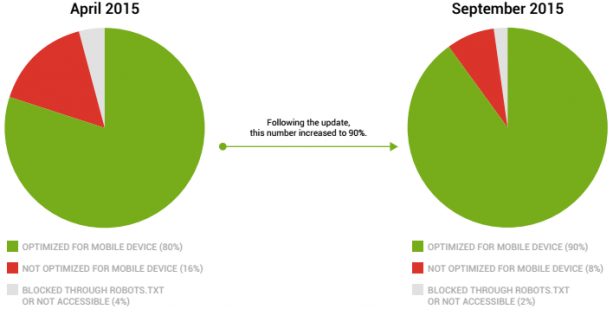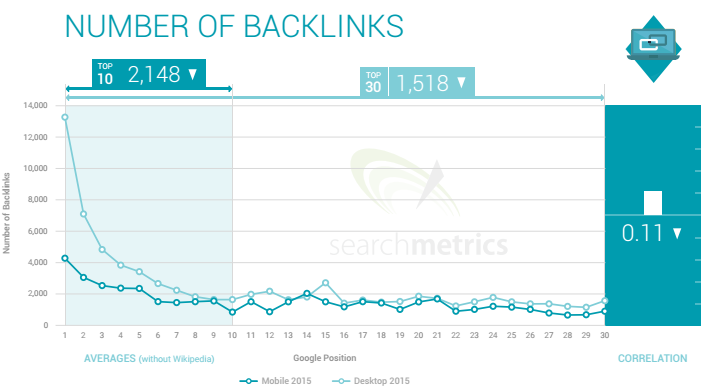We’ve just passed the half-year mark since Mobilegeddon, which was arguably Google’s biggest algorithm update since the likes of Panda and Penguin. The update, which landed on April 21st, looks to demote sites in mobile search that still serve their desktop configuration in favour of those that utilise a mobile-friendly configuration.
Mobilegeddon served as an evolution that finally reflected the increase of mobile phone in a consumer's journey. By the start of 2015, mobile ownership worldwide reached close to 2 billion with mobile search even overtaking desktop search later in the year.
Once the update was announced in February 2015, I remember nervousness enveloping the industry (understandably rooted in the hangover from Panda and Penguin). Several business owners waited like a rabbit in the headlights, uncertain of how their non-mobile-friendly site would fair while others took a more proactive approach. When Mobilegeddon launched, Google reported an uplift of 5% in mobile-friendly sites during that time.
Now, as 2016 quickly approaches, the dust from Mobilegeddon has settled. Although Google’s reassurance that the update would only be a subtle evolution was correct, some unique insight into mobile-specific ranking factors has started to surface. In particular, Searchmetrics' latest report (requires registration to access) begins to pave the way for 2 separate schools of thought: desktop SEO and mobile SEO.
The report took 10,000 keywords and analyzed the first 30 results on mobile and desktop by comparing several common ranking factors. The results revealed some significant variances between the two devices, highlighting the need for separate considerations when focusing on mobile and desktop search traffic.
This post details some of their key findings along with insights and examples from other sources in an attempt to outline the current state-of-play of mobile SEO as we approach 2016.
Increase in Mobile-friendly Sites in Mobile SERPs
The first revealing insight from the Searchmetrics report was a 10% increase in mobile-friendly sites present in mobile SERPs just 5 months after Mobilegeddon landed. September 2015 saw 90% of ranking sites optimised for mobile, while only 80% were optimised back in April. Non-mobile-friendly sites dropped by half too; falling from 16% in April to 8% in September.

I fully expect this percentage to increase further as we approach the new year. Danyl Bosomworth mentioned in July how we’re well passed the tipping point for mobile and he’s absolutely right. By now, mobile should form an integral part of your online strategy. If your site isn’t optimised for mobile by 2016, then you should seriously consider migrating your site to a mobile-friendly configuration.
As a reminder, search engines support three configurations when creating mobile-friendly sites. You can choose from a responsive, dynamic serving, and parallel URL configuration. However, bear in mind that Google and Bing have both stated that they prefer the former.
For example, Great Bean Bags, an eCommerce store based out in the UK, converted their site to responsive shortly after Mobilegeddon and witnessed an 18% increase in mobile traffic year-on-year between the months of April and September. Investing in their mobile strategy allowed for greater online visibility for the business, which generated 13,815 additional users for them.
Mobile Behaviour and Intent
The methods in which users are engaging with mobile is becoming increasingly more apparent. It’s cementing itself more as a research platform, rather than a channel that’s directly responsible for conversions. The focus here is helping to increase intent and it appears to be universal across a range of businesses, both local and national.
For instance, Searchmetrics reported that, from their sample of selected keywords, over 60% of eCommerce-related keywords were performed on mobile, despite desktop still generating the most conversions. This implies that customers are using a more multi-channeled and considered approach when converting, with mobile acting more as the middle man.
Mobile user behaviour is something Google have commented on previously, reporting that 88% of searches with local intent are done so on mobile. Again, this is suggestive of information-led behaviour from users but on a more local level.
Online marketers are beginning to use this knowledge to inform their content and user experience too. This is particularly evident in the cases of AHF and MCA Leicester, where store contact and opening time information is prioritised over content:


Technical Considerations for Mobile
The Searchmetrics report suggested that technical SEO is playing an increasingly major role in successful mobile visibility. Whilst the user is constantly at the mercy of a smaller screen, limited bandwidth and slower connectivity, it’s important that your mobile experience is fluid to offset this.
A particular focus was placed on site speed and file size, with higher mobile ranking demanding faster sites and smaller files than its desktop counterpart.
On average, sites that ranked page one on mobile loaded 0.05 seconds quicker than they did on desktop. To check and optimise your mobile site speed, use Google PageSpeed Insights tool or Pingdom.
Avoiding flash was another ranking factor that was highlighted. This is arguably owed to the Flash elements’ poor cross-device compatibility and crawlability issues.
Content Considerations for Mobile
Along with certain technical SEO considerations, it appears that higher mobile rankings also rely on specific content factors. For instance, according to Searchmetrics’ sample, sites that ranked within the top 10 on mobile featured 31% fewer words per page than desktop. The average word count for a mobile site ranking on page one was 867 words. It follows, therefore, that keyword targeting per page was also smaller. The average number of keywords within desktop content was 10.22 whilst it was only 5.45 on mobile.
As Barbara Starr previously advised last year, mobile content needs to follow the “less is more” paradigm. Mobile users are often “on-the-go,” so content needs to be digestible and short in order to be quickly read. In some instances, like eCommerce for example, it could almost be deemed as secondary. We Sell Electrical, an electrical supplies retailer, took this approach a step further by demoting their content below their product offerings on their category pages:
Upon implementing this new category page structure shortly after the Mobilegeddon update, We Sell Electrical experienced a reduced bounce rate of 12% year-on-year across their key category landing pages. This is intrinsic to the intent consideration I outlined earlier. Users are served products first to suit their focused browsing behaviour, allowing minimal scrolling and quicker access to product pages from category pages.
Promotional Considerations for Mobile
Perhaps the most significant finding from Searchmetrics’ report is the apparent decline in the importance of inbound linking. Sites that ranked highly on mobile possessed far fewer backlinks than sites on desktop rankings.

Interestingly, social media appeared to be increasing in off-page importance with high social signals correlating with higher mobile rankings. However, in light of this, online marketers should be wary of replacing their link building activity in favour of social media management. Both are still highly valuable, as long as the link building activity is relevant and increases the PR value of a site. The fact that it’s appearing to be decreasing in importance is relative as it still remains the highest weighted ranking factor, both on mobile and on desktop.
The correlation between high social signals and higher mobile rankings does undoubtedly make sense since mobile is seamlessly integrated with social media. However, higher ranking sites will naturally achieve increased social shares due to great exposure and visibility, suggesting perhaps that one is not necessarily a by-product of the other.
Summary
Mobile and desktop ranking factors are appearing to be straying further and further away from each other. What accounts for one, doesn’t necessarily account for the other.
Google and other search engines have been user-focused for some time now and the evolution of mobile search in 2015 further reflects this. Mobile search is evidently becoming more and more refined as search engines continue to understand and interpret what the user is looking for. It’s becoming increasingly apparent therefore that the two channels shouldn’t always be viewed holistically, rather, they should have their own respective digital strategies.
How did Mobilegeddon affect your business? Please feel free to share your thoughts in the comments below.






